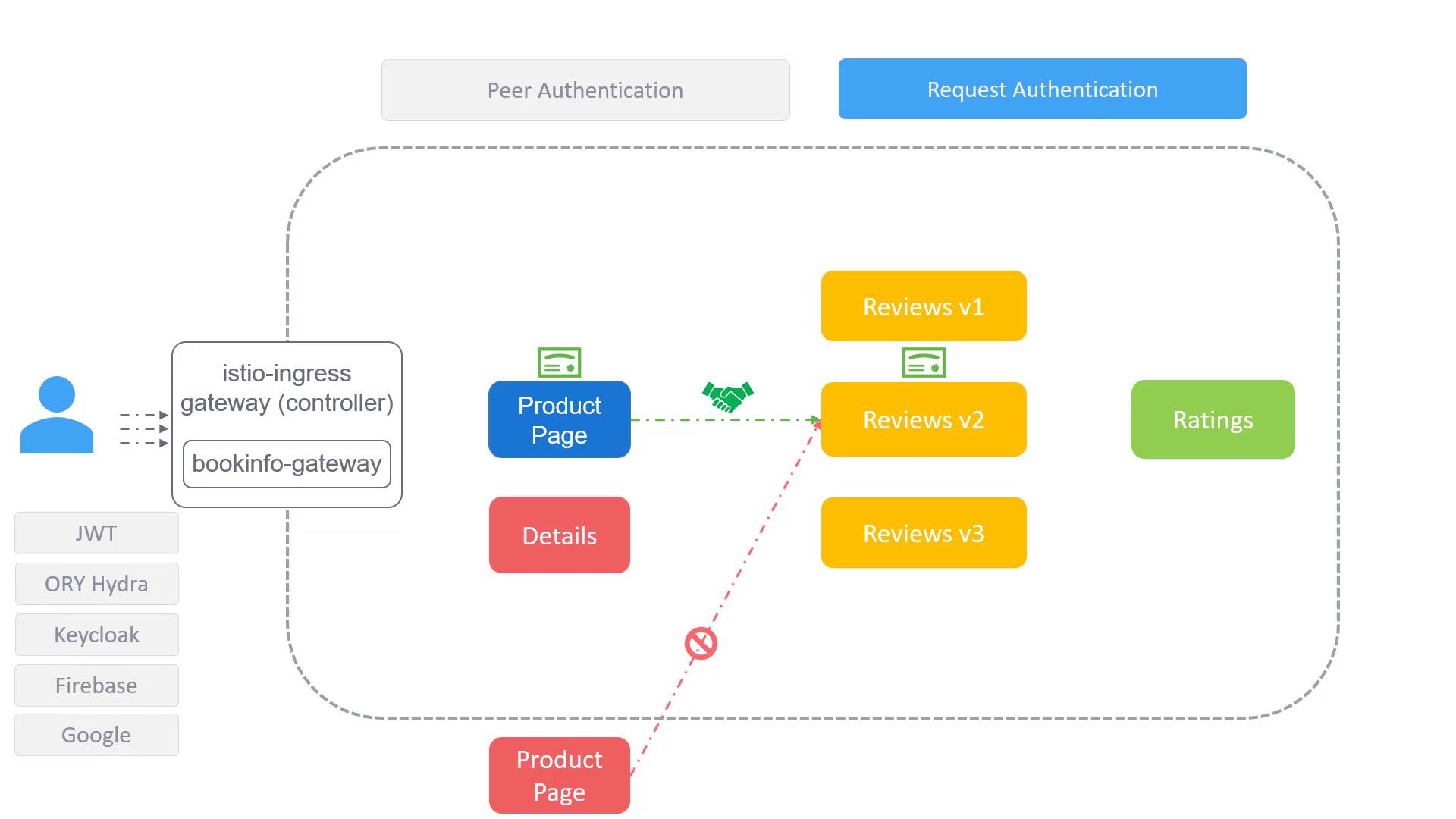Istio Service Mesh
Security
Authentication
In this lesson, we explore how Istio implements authentication, covering both service-to-service and end-user access control. In service-oriented architectures, it is critical to verify that inter-service communications are legitimate. For example, when the product service sends a request to the review service, the latter must ensure that the request comes from the authorized product service and not from an imposter. Istio accomplishes this through mechanisms such as Mutual TLS (mTLS) and JSON Web Token (JWT) validation.
With mTLS, each service is assigned a unique identity secured by automatically managed certificate key pairs from Istiod. This leaves the services free from managing their own certificates, thereby simplifying the secure communication process.
In addition to authenticating service-to-service interactions, Istio also supports end-user authentication. This is achieved using JWT validation or via OpenID Connect providers like Ory Hydra, Keycloak, Firebase, or Google.

Below are examples of Istio's authentication configurations using PeerAuthentication resources. These configurations define authentication policies and determine how rules are applied to workloads.
Tip
For optimal security, consider applying stricter policies first on a per-workload basis before extending them to namespace or mesh-wide scopes.
Workload-Specific Policy with PeerAuthentication
This configuration enforces a strict mTLS mode exclusively on workloads in the Bookinfo namespace that are labeled with app: reviews.
apiVersion: security.istio.io/v1beta1
kind: PeerAuthentication
metadata:
name: "example-peer-policy"
namespace: "book-info"
spec:
selector:
matchLabels:
app: reviews
mtls:
mode: STRICT
Namespace-Wide Policy
Removing the selector applies the strict mTLS configuration across all workloads within the Bookinfo namespace, effectively creating a namespace-wide policy.
apiVersion: security.istio.io/v1beta1
kind: PeerAuthentication
metadata:
name: "example-peer-policy"
namespace: "book-info"
spec:
mtls:
mode: STRICT
Mesh-Wide Policy
Assigning the policy to the root namespace (in this case, the istio-system namespace) extends the strict mTLS configuration to every workload throughout the entire mesh.
apiVersion: security.istio.io/v1beta1
kind: PeerAuthentication
metadata:
name: "example-peer-policy"
namespace: "istio-system"
spec:
mtls:
mode: STRICT
These examples illustrate how Istio supports comprehensive authentication policies, from targeting specific workloads to applying mesh-wide security protocols. For further details, refer to the Istio Documentation.
Watch Video
Watch video content